|
San Diego City and County Historic Designations
By Ann Jarmusch
July/August 2023
The May 2023 meeting of the City of San Diego Historical Resources Board lacked a quorum and was canceled.
At the June meeting, the HRB designated seven resources, including the Ocean Beach Pier. They also welcomed a new member, Rammy Cortez, who is a developer and builder of small urban infill housing and mixed-use projects. Mayor Todd Gloria named Cortez to serve, and reappointed HRB members Bruce Abrams, David McCullough, Michael Taylor, and Matthew Winter. All appointments are for two years.
Staff announced appeals to the City Council of three April 2023 designations: the Donald and Gladys Clitsome/Lloyd Ruocco House; Mamie and Oliver Evans/William Templeton Johnson House; and Fred Rohr/Ralph L. Frank House. Hearing dates are not yet set.
On June 20, 2023, the Council denied an appeal of the former Mission Hills Branch Library’s designation from the HRB’s September 2020 meeting. (Read the meeting report online) Councilmembers voted 5-3 to uphold the HRB’s decision, persuaded partly by a large public turnout and many emails, backed by Mission Hills Heritage, which had nominated the building for landmarking, and SOHO.
Staff also reported that the Historic Preservation section of Development Services is being renamed Historic Preservation and Cultural Heritage and will now be part of the Planning Department. As she has for several years, Kelley Stanco, Planning’s Deputy Director, Environmental Policy & Public Spaces, will continue to lead the section.
Along with Ocean Beach Pier, the board designated five houses and a Hybrid Bungalow Court, all described below:
|
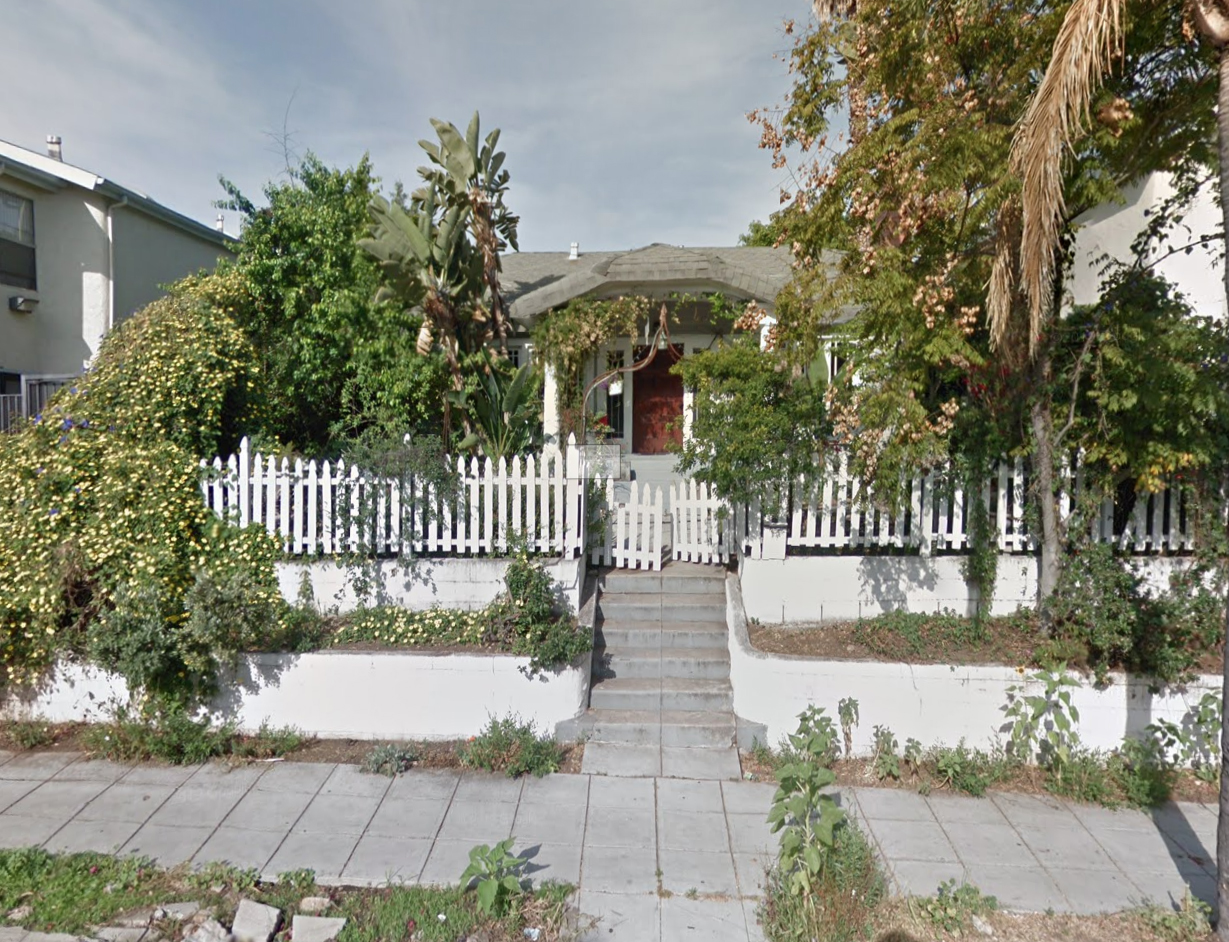 3022 30th Street, North Park, is a 1920 house designated as the Ida Rhodes/Alexander Schreiber House. It meets HRB Criteria C for architecture by embodying and retaining the distinctive characteristics of the Craftsman style with Colonial Revival influences. It also meets Criterion D as a fine work of Master Builder Schreiber. Notably, owner Teresa Vessels prepared the complex nomination herself and, following the board’s unanimous vote of 8-0, offered to help other homeowners in lower-income neighborhoods to navigate the local designation process to access the benefits of historic preservation. The designation excludes the detached garage previously approved for demolition, detached 2007 shed, detached 2014 shed, and the 2019 rear addition. Photo courtesy Google Street View 3022 30th Street, North Park, is a 1920 house designated as the Ida Rhodes/Alexander Schreiber House. It meets HRB Criteria C for architecture by embodying and retaining the distinctive characteristics of the Craftsman style with Colonial Revival influences. It also meets Criterion D as a fine work of Master Builder Schreiber. Notably, owner Teresa Vessels prepared the complex nomination herself and, following the board’s unanimous vote of 8-0, offered to help other homeowners in lower-income neighborhoods to navigate the local designation process to access the benefits of historic preservation. The designation excludes the detached garage previously approved for demolition, detached 2007 shed, detached 2014 shed, and the 2019 rear addition. Photo courtesy Google Street View
|
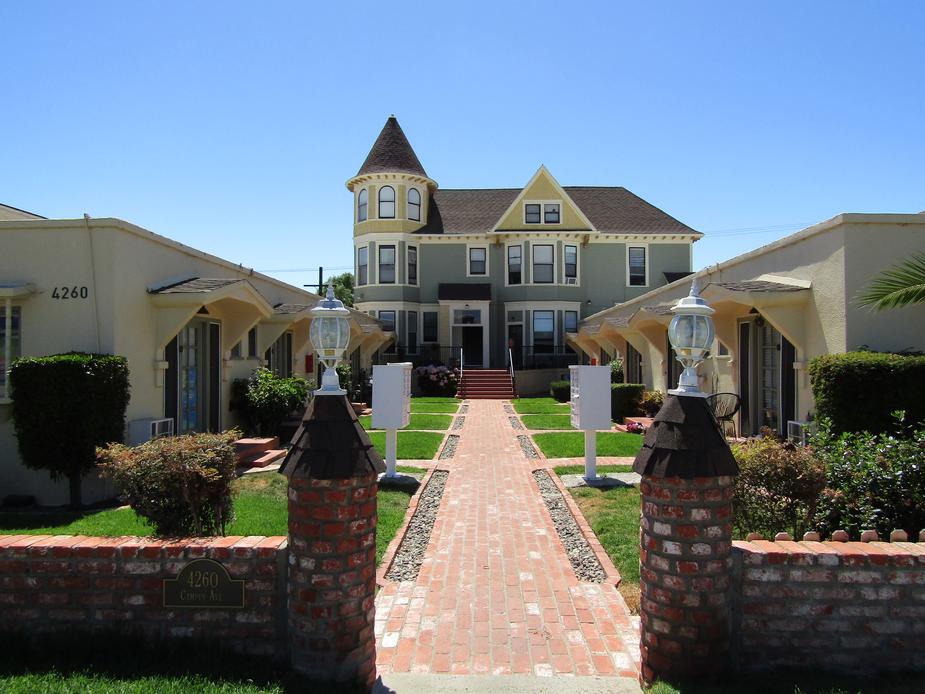 4260 Campus Avenue in University Heights is the location of Torrey Apartments, with a period of significance of 1924-1926. As a special element of San Diego’s historical, social, economic, aesthetic, and architectural development through its Hybrid Bungalow Court typology, this resource meets HRB Criterion A. It is a prominent example of a Hybrid Bungalow Court, featuring a combination of multifamily residential buildings from different time periods and architectural styles in response to San Diego’s early 20th-century housing shortage. Specifically, a large Queen Anne style house from 1892 with a tall turret was moved on-site in 1924; it became the surprise centerpiece of the Spanish Colonial Revival bungalow court built in 1926. 4260 Campus Avenue in University Heights is the location of Torrey Apartments, with a period of significance of 1924-1926. As a special element of San Diego’s historical, social, economic, aesthetic, and architectural development through its Hybrid Bungalow Court typology, this resource meets HRB Criterion A. It is a prominent example of a Hybrid Bungalow Court, featuring a combination of multifamily residential buildings from different time periods and architectural styles in response to San Diego’s early 20th-century housing shortage. Specifically, a large Queen Anne style house from 1892 with a tall turret was moved on-site in 1924; it became the surprise centerpiece of the Spanish Colonial Revival bungalow court built in 1926.
|
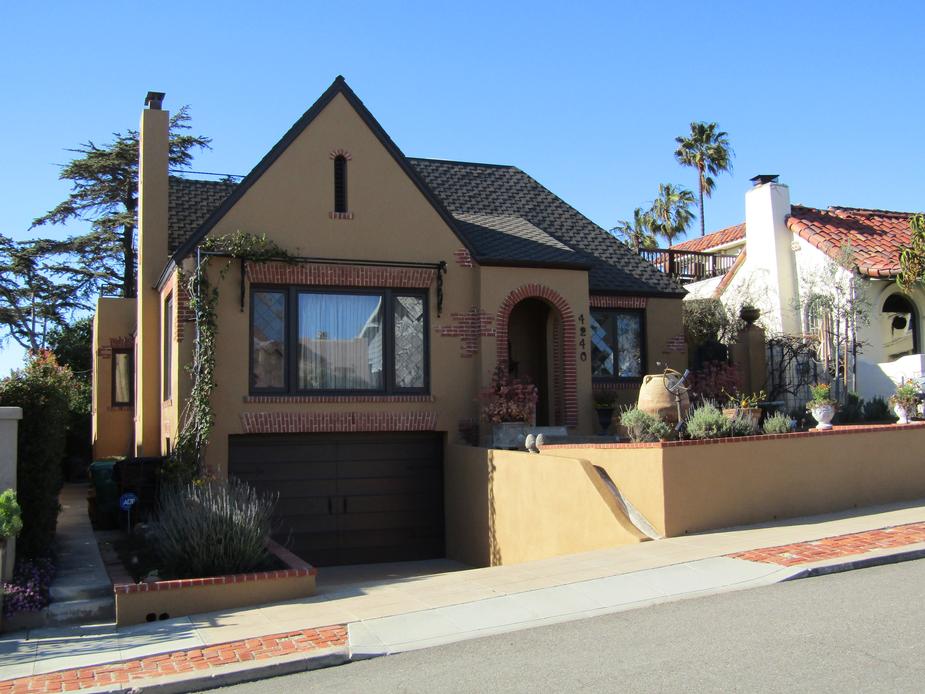 4240 Trias Street in Mission Hills is a two-story Tudor Revival Style residence constructed in 1925 and named the Earnest Hausen and James Hutchins Spec House #1 for its builders. Although modified over the decades, the home retains historic Tudor Revival style architectural elements and characteristics, qualifying it for landmarking under HRB Criterion C. The designation excludes the 1997 rear addition and deck. 4240 Trias Street in Mission Hills is a two-story Tudor Revival Style residence constructed in 1925 and named the Earnest Hausen and James Hutchins Spec House #1 for its builders. Although modified over the decades, the home retains historic Tudor Revival style architectural elements and characteristics, qualifying it for landmarking under HRB Criterion C. The designation excludes the 1997 rear addition and deck.
|
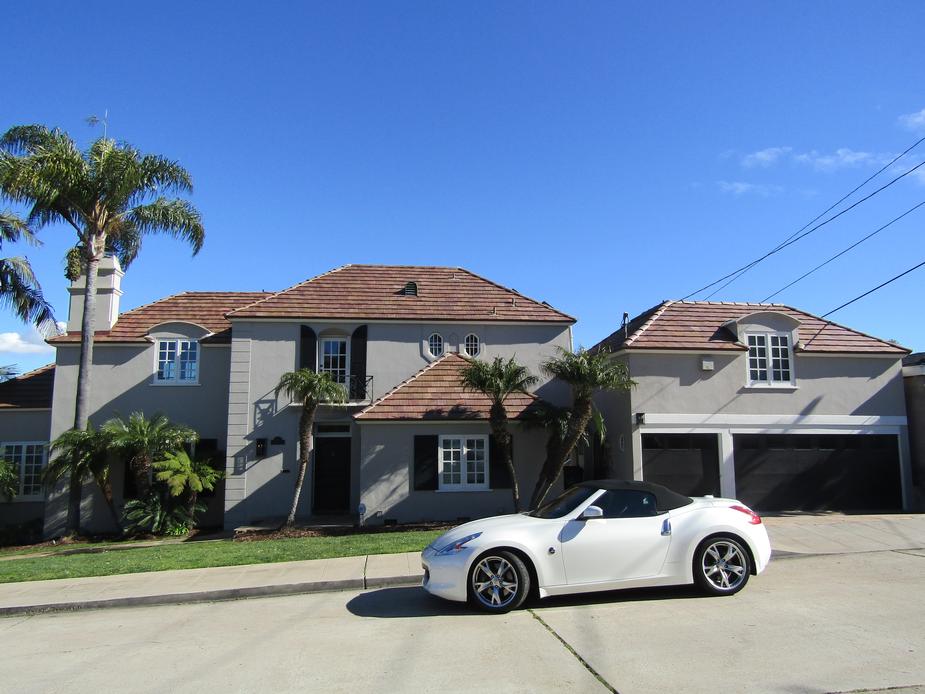 2275 Evergreen Street in Point Loma is the T. Claude Ryan House #2, home of the president of Ryan Aeronautical, a leading manufacturer of aircraft and technologies throughout World War II and the Cold War. He and his wife, Gladys, lived here from 1937-1962, during Ryan’s most productive years as a national leader in aeronautics. For this association with a famous historic person, the house is designated under HRB Criterion B, with a period of significance of 1937-1962. For the home’s embodiment and retention of character defining features of the French Eclectic style with Regency Revival influences, it is also designated under HRB Criterion C, with a period of significance of 1937-1945. The designation includes the garage and second-story addition constructed in 1945. It excludes the 2006 rear basement addition. 2275 Evergreen Street in Point Loma is the T. Claude Ryan House #2, home of the president of Ryan Aeronautical, a leading manufacturer of aircraft and technologies throughout World War II and the Cold War. He and his wife, Gladys, lived here from 1937-1962, during Ryan’s most productive years as a national leader in aeronautics. For this association with a famous historic person, the house is designated under HRB Criterion B, with a period of significance of 1937-1962. For the home’s embodiment and retention of character defining features of the French Eclectic style with Regency Revival influences, it is also designated under HRB Criterion C, with a period of significance of 1937-1945. The designation includes the garage and second-story addition constructed in 1945. It excludes the 2006 rear basement addition.
|
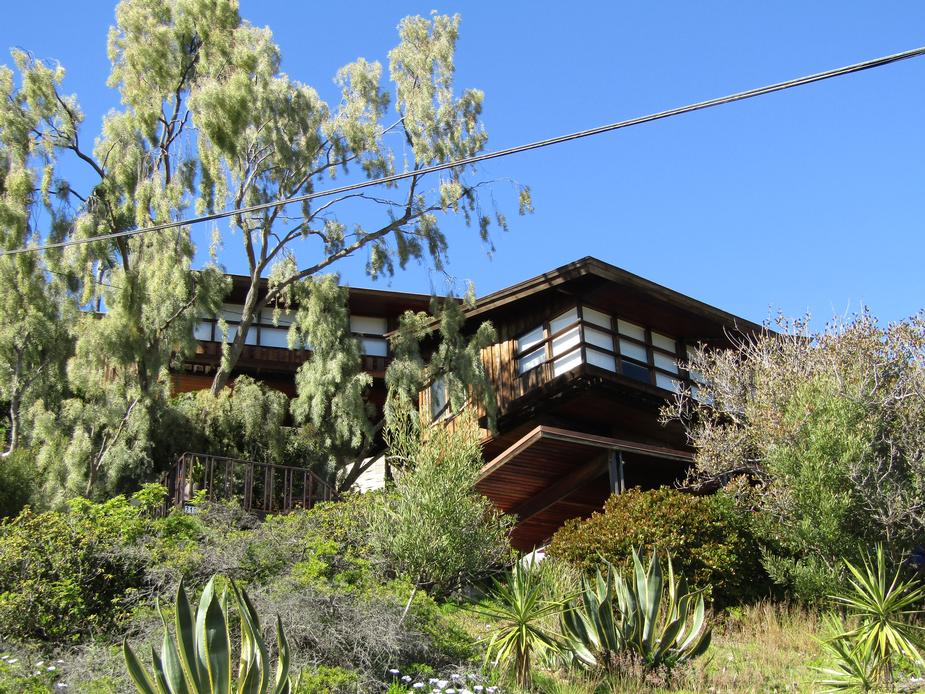 3120 Sterne Street, Peninsula Community, is the first house that notable structural engineer George Saunders designed as a young man and shared with his wife, Martha. They built this cantilevered design on a steep site overlooking San Diego Bay in two phases, from 1951-1955. It meets HRB Criterion C for its Organic Geometric elements, including asymmetrical facades, exterior cladding of natural, unpainted redwood; exposed concrete masonry supports and steel supports; repeated window geometry, and large expanses of glass to connect with the outdoors. Based on his long and distinguished career, several HRB members advocated for George Saunders to be recognized as a Master Structural Engineer in the future. The designation excludes the north elevation 1977 dining room addition, the 1996 south elevation two-story addition, and the 1996 east elevation deck. 3120 Sterne Street, Peninsula Community, is the first house that notable structural engineer George Saunders designed as a young man and shared with his wife, Martha. They built this cantilevered design on a steep site overlooking San Diego Bay in two phases, from 1951-1955. It meets HRB Criterion C for its Organic Geometric elements, including asymmetrical facades, exterior cladding of natural, unpainted redwood; exposed concrete masonry supports and steel supports; repeated window geometry, and large expanses of glass to connect with the outdoors. Based on his long and distinguished career, several HRB members advocated for George Saunders to be recognized as a Master Structural Engineer in the future. The designation excludes the north elevation 1977 dining room addition, the 1996 south elevation two-story addition, and the 1996 east elevation deck.
|
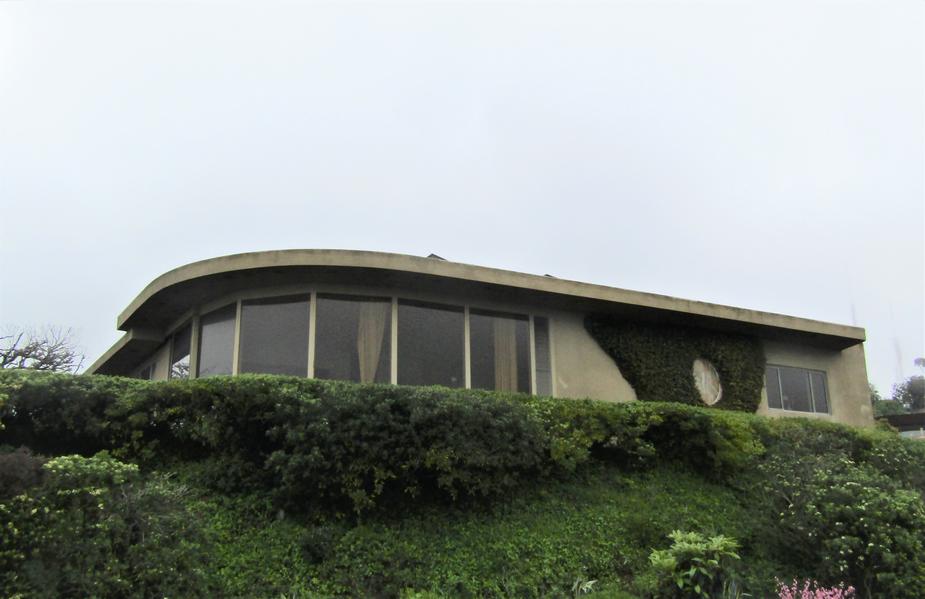 7245 Rue de Roark in La Jolla is the Jerome and Joyce Shaw /Lloyd Ruocco House built in 1966. It meets HRB Criteria C for its Organic Geometric style, including an asymmetrical façade, a curved flat roof with cantilevered overhangs, an interior courtyard with an oculus, a round decorative window, and floor-to-ceiling glass. As a notable work of Master Architect Lloyd Ruocco, meeting HRB Criterion D, the house reflects his design aesthetic: the use of natural materials, minimal ornamentation, emphasis on indoor-outdoor living, and siting to capture ocean views. 7245 Rue de Roark in La Jolla is the Jerome and Joyce Shaw /Lloyd Ruocco House built in 1966. It meets HRB Criteria C for its Organic Geometric style, including an asymmetrical façade, a curved flat roof with cantilevered overhangs, an interior courtyard with an oculus, a round decorative window, and floor-to-ceiling glass. As a notable work of Master Architect Lloyd Ruocco, meeting HRB Criterion D, the house reflects his design aesthetic: the use of natural materials, minimal ornamentation, emphasis on indoor-outdoor living, and siting to capture ocean views.
|
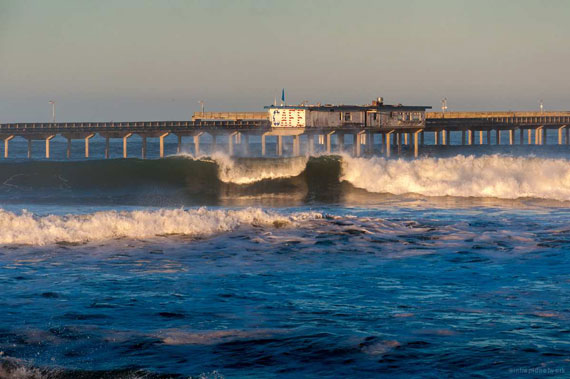 Ocean Beach Pier, western terminus of Niagara Street, Ocean Beach, was the longest concrete pier on the West Coast when it was completed in 1966, after years of planning, fundraising, and construction. Popular ever since with residents and tourists of all ages, the 1,971-foot-long pier attracts sea lovers for strolling, jogging, fishing, and watching the waves and surfers who pass under the expanse, not to mention taking in sunsets. The pier represents a special element of the historical and economic development of Ocean Beach and the entire city, and retains integrity to its 1966-1977 period of significance, thus fulfilling HRB Criterion A. It also embodies and retains the distinctive characteristics of the fishing pier typology, qualifying it for designation under HRB Criterion C with a 1966-1968 period of significance. Extending over the deep water of the Pacific Ocean, the pier is constructed of concrete with a smooth concrete walking surface supported by pillars. The designation includes the restaurant building and the 1968 lifeguard watch tower. Photo courtesy oceanbeachsandiego.com Ocean Beach Pier, western terminus of Niagara Street, Ocean Beach, was the longest concrete pier on the West Coast when it was completed in 1966, after years of planning, fundraising, and construction. Popular ever since with residents and tourists of all ages, the 1,971-foot-long pier attracts sea lovers for strolling, jogging, fishing, and watching the waves and surfers who pass under the expanse, not to mention taking in sunsets. The pier represents a special element of the historical and economic development of Ocean Beach and the entire city, and retains integrity to its 1966-1977 period of significance, thus fulfilling HRB Criterion A. It also embodies and retains the distinctive characteristics of the fishing pier typology, qualifying it for designation under HRB Criterion C with a 1966-1968 period of significance. Extending over the deep water of the Pacific Ocean, the pier is constructed of concrete with a smooth concrete walking surface supported by pillars. The designation includes the restaurant building and the 1968 lifeguard watch tower. Photo courtesy oceanbeachsandiego.com
|
All photos are from the California Historical Resources Inventory Database (CHRID), except where noted otherwise. The above designations were reviewed and approved by the City of San Diego Historical Resources Board (HRB), the County of San Diego Historic Site Board (HSB), or the Coronado Historic Resources Commission.
|
2025
2024
2023
2022
2021
2020
2019
2018
2017
2016
2015
|










